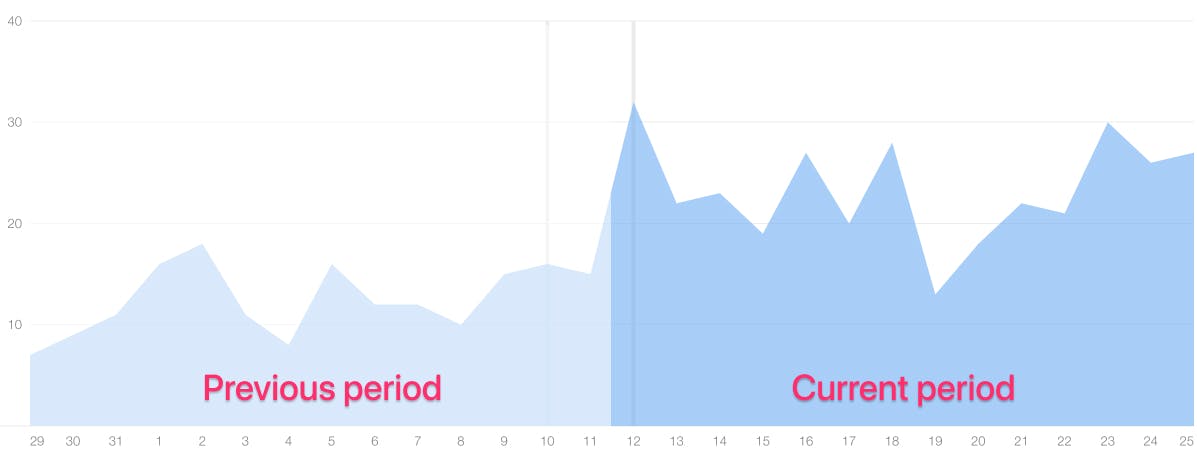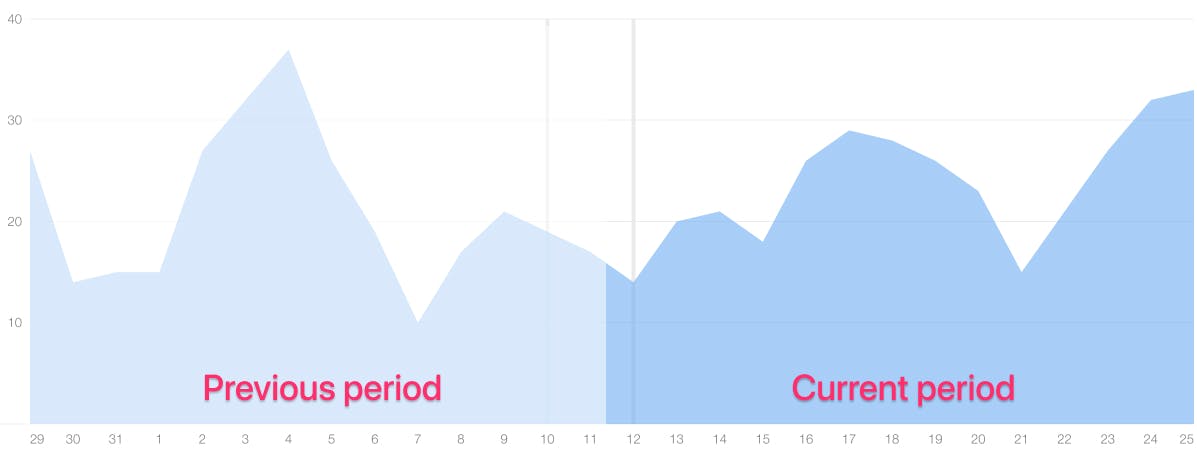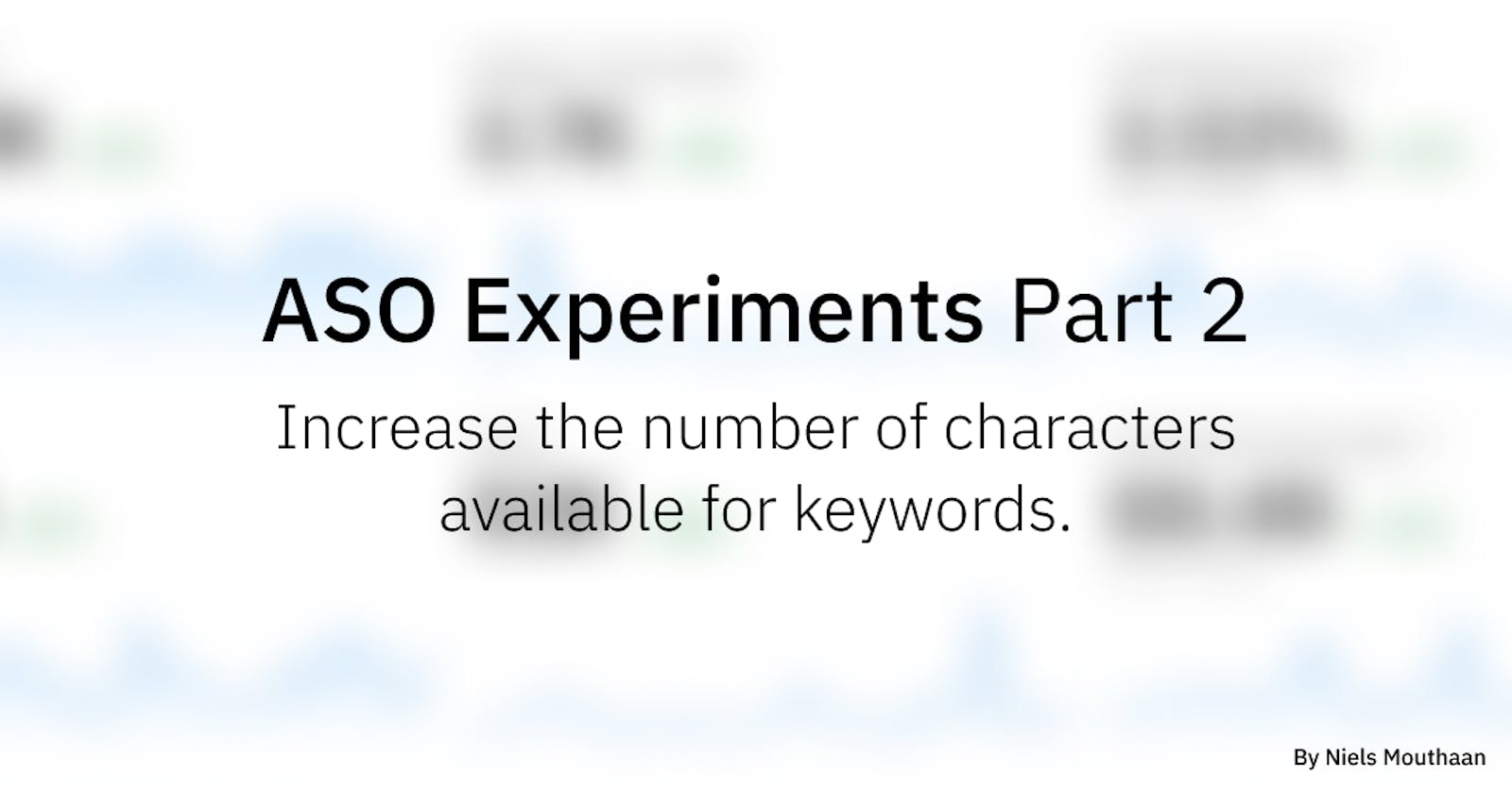ASO Experiments Part 2: Increase the number of characters available for keywords
Welcome to part two of a series of articles in which I provide results of various ASO (App Store Optimization) experiments for one of my apps, Daily Time Tracking. By running these experiments, I aim to increase the number of impressions, page views, and app units, ultimately leading to an increase in revenue. Keen to do the same for your app? My findings might be helpful! Subscribe to be notified of new articles, and please get in touch if you have questions or feedback 👍.
Need help optimizing your App Store listing? I'm available for hire!
This part explains how to increase the number of characters available for keywords and shows how this affected the number of impressions for Daily.
Part one can be found here. It explains how to find keywords, even for languages you don't speak yourself, and how to analyze their performance.
Doubling characters for keywords
For each locale, you can use up to 100 characters to provide keywords for your app. But depending on the country of the (App Store) user, you might be able to double or triple it. This is because, for most countries, multiple locales are evaluated when a user searches on the App Store. See this list for an overview. Let's take the United States as an example. It obviously ranks for English (U.S.) but also ranks for Spanish (Mexico). If you don't have a Spanish translation for your app (or App Store listing), it still makes sense to add Spanish (Mexico) and use the same copy as English (U.S.), including app previews, screenshots, and description. Just use a different set of (English) keywords in order to also rank for those.
This edition's experiments
This edition's experiments are all about making use of adding secondary locales to increase discoverability. They ran from November 12 to November 25.
Introduce English (Australia)
Adding English (Australia) affects App Store users in Australia and New Zealand. Search queries in those countries are evaluated against English (Australia) and English (U.K.) Hence, adding them both would give you up to 200 characters for adding keywords.
I have added my primary keywords to English (U.K.) and secondary keywords to English (Australia).
Results
I compared both Australia and New Zealand with their previous periods. Also, I've applied the App Store Search filter to ensure I only get impressions as a result of a user searching in order to limit bias.
Australia
Previous period: 208
Current period: 328 (up by 58%)

New Zealand
Previous period: 45
Current period: 88 (up by 96%)

These are significant increases! Other experiments running during the same period likely played a role too. Especially the experiment of changing keywords for English (U.K.). It's best to avoid running experiments potentially affecting each other at the same time. Still, after comparing the results of those experiments, I can conclude that introducing secondary locales to increase the number of keywords definitely affects the number of impressions.
I've also looked at how this affected product page views and app units. Unfortunately no significant changes here and in the end, this is what counts. This is likely caused by secondary keywords being less relevant. I have planned additional experiments to further optimize those keywords hopefully resulting in an increase of product page views and ultimately app units.
Introduce Canada-specific locales
Another experiment I did was adding English (Canada) and French (Canada). Search queries done by Canadian App Store users are evaluated against those locales. Previously, I didn't have those meaning my default locale (English (U.S.)) was used. Since I reused its (primary) keywords for English (Canada), only adding French (Canada) might affect impressions. Here I had two options: either use (secondary) English keywords, or use (primary) French keywords. Since 21% of Canada's population uses French as their primary language, I decided to go for the latter.
Results
I compared both Canada with its previous period. Also, I've applied the App Store Search filter to ensure I only get impressions as a result of a user searching in order to limit bias.
Previous period: 296
Current period: 333 (up by 13%)

While there has been an increase, it is similar to the increase in the United States during the same period (likely as a result of another experiment run in parallel, so again: try to avoid doing this). Personally, I was hoping to see more coming out of this experiment as I hoped to be better discoverable for French-speaking Canadians. Perhaps they are using English keywords to find apps like Daily? I've planned using secondary English keywords for French (Canada) to find out if this works better.
This editions' key takeaway
Use secondary (or even tertiary) locales as an easy way to get extra characters for adding additional keywords. Besides optimizing keywords, this is the easiest way to improve discoverability as I've shown. French, Spanish (Mexico), and Arabic are locales often used as the secondary locale for a lot of countries so considering starting with those. I likely will run experiments in the future replacing local (translated) keywords with secondary English keywords to test whether local users are more often searching for those rather than (more relevant) keywords in their own language.
Also, be aware that using secondary keywords are likely less relevant to your app (if not, they should be your primary keywords 🙃. As a result, they likely will affect impressions but to a lesser extend product page views and app units. Hence, it is crucial to keep tweaking your keywords to make them as relevant and competitive as possible.
Next editions' experiments
Results for the next editions' experiments are already in. They include:
Adding most relevant keywords (e.g. “time tracking”), already visible in app name and subtitle, in the keywords field to further increase ranking on those words. Most experts contradict the effectiveness of this. Let's see 👍.
Changing category from Productivity to Business to increase impressions as a result of App Store browsing (hence, not searching).
Introducing a more notable app preview to increase product page views.
Subscribe or follow me on Twitter to be informed when I have published their results.
Thanks for reading!

